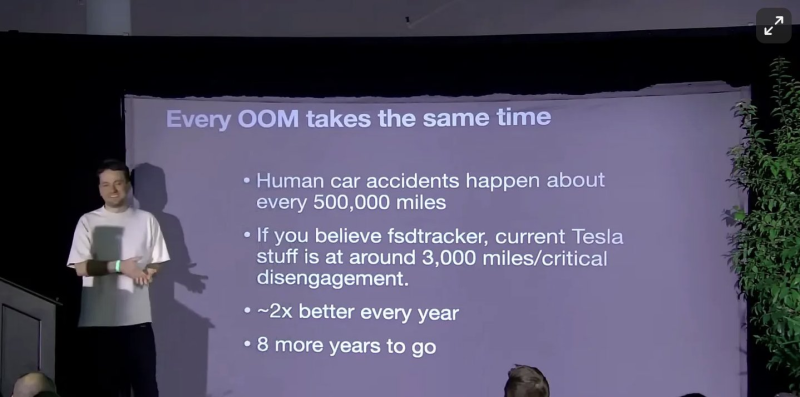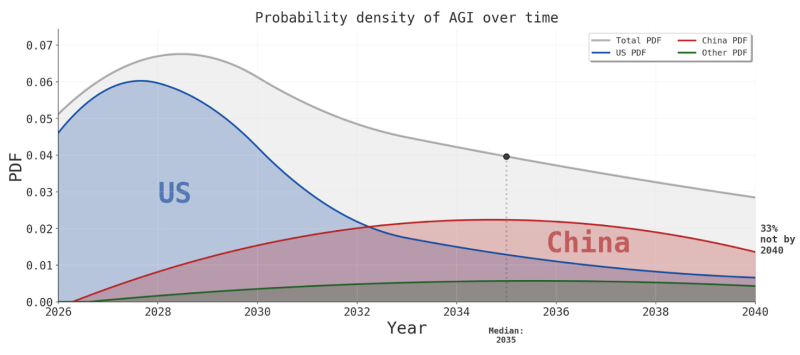⬤ Leading figures in AI are starting to agree on something unusual: 2035 keeps coming up as the year we might see AGI. In a field where predictions usually swing wildly, this convergence is worth noting — though it might tell us as much about how people cope with uncertainty as it does about actual progress.

⬤ Sam Altman mentioned superintelligence could show up "in a few thousand days." Andrej Karpathy said AGI is "still a decade away" during a podcast appearance. Dwarkesh Patel built a probability model that puts the median at 2035, showing US development ramping up first, then China catching up later — with about a one-in-three chance we don't get there by 2040 at all.

⬤ The ten-year pattern shows up elsewhere too. George Hotz broke down Tesla's self-driving data: human drivers crash roughly every 500,000 miles, while Tesla's system currently needs intervention around every 3,000 miles. If improvements keep doubling yearly, superhuman driving could arrive in about eight years — right around the same timeframe.
⬤ METR's research shows AI getting exponentially better at extended reasoning tasks. Project those curves to 2035 and you're looking at capabilities that mirror a full human career. But here's the uncomfortable part: maybe everyone's picking ten years because it feels far enough away to avoid panic. Far enough that we can all keep acting normal.
⬤ The real issue isn't the timeline — it's that nobody seems to agree on what we should actually be building before AGI shows up. We might just be keeping ourselves entertained while we wait for the future to arrive. At least we're learning some interesting things along the way.
 Peter Smith
Peter Smith

 Peter Smith
Peter Smith


